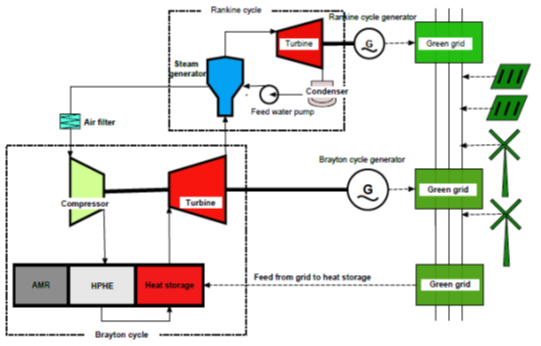PCMR (Pty) Ltd
Power Cell Micro Reactor
Energy Trilemma
The World Energy Council measures the energy scenario of countries in terms of the Energy Trilemma on the three dimensions of Energy Security, Energy Equity and Environmental Sustainability. The scales used on each of the three dimensions are A, B, C and D where an A presents the highest and D the lowest score. The ratings are stated in terms of the three dimensions for example (AAA) which indicates the highest ranking and (DDD) indicating the lowest. In terms of this survey that was published for 2020 [1], South Africa was rated as CBD and placed at number 74 out of the 108 countries that were evaluated. From this, South Africa is facing a massive electricity production crisis.
The dimension on which it scored the worst is on Environmental Sustainability and this rating is mostly driven by the huge reliance on coal fired power stations. Energy Security is also under stress with the current Energy Availability Factor (EAF) [2], being lower than 60%. If this downward trend continues the South African electricity supply is heading for a massive collapse and initiatives should be put in place to stem the downward spiral in the availability of electricity.
The South African government, being aware of the large carbon footprint caused by the coal fired power plants, has embarked on an initiative to add substantial blocks of renewable energy generation to the national grid [3]. The power shortage in the country is large and the requirement for additional power is immediate, the only power supply that fits the carbon-free specification and can be added relatively quickly to the national grid is renewable power. It is however generally realised that, although these generators can be added relatively quickly to the grid, its location is dependent on the availability of wind and sunshine and consequently does not offer a complete solution for users that are dependent on a guaranteed constant supply of electricity, and located far from these locations, such as operators of factories, mines, smelters etc. Grid capacity and access are however a challenge, in areas where the natural resources are in abundance, forcing Eskom to invest a substantial capital creating grid capacity and access in these areas, therefore delaying the construction of wind and solar panel generators. The one argument that guaranteed power can be supplied from renewable energy generators, on demand anywhere in the country, since on any day the wind blows and the sun shines somewhere, but this does not provide for an economically definable solution since transmission losses can be substantial in a physically large country like South Africa. Furthermore, grid capacity and access are however a challenge, in areas where the natural resources are in abundance, therefore delaying the construction of wind and solar generators. The other argument that energy storage will partly provide a solution is still not completely validated due to the geographic location of dams and the development status of other energy storage technologies specifically for South Africa.
One way to solve the problem of renewable energy generators intermittent supply pattern, is to combine renewable energy generators with one or a multiplicity of small nuclear reactors such as the AMR that will provide a constant power generation “backbone”. This combination is called a Power Cell.
The “Power Cell” concept
The resolution to add “carbon-free footprint” generation to the national grid will require back-up base-load generation to supplement the shortfall in generation during periods when renewable generators cannot supply the demand. Since the carbon-free footprint needs to be conserved, this back-up generation cannot be supplied by similar installations currently installed as gas turbine peaking units. Consequently, a new concept is proposed that can supply reliable power at decentralised locations in a stand-alone configuration or integrated into the national grid. This concept is called a “Power Cell”. The “Power Cell” is a power producing complex that is configured to provide a symbiotic “co-habitation” of renewable power generators with a small inherently safe nuclear reactor, the AMR with a thermal power of 10 MW.
The Power Cell configuration

References
[1]
[2]
[3]
[4]
World Energy Council (Energy Index tool, 2020)
J. Wright, J. Calitz (Eskom’s Energy Availability Factor – CSIR Energy Centre Pretoria, January 2020.)
Minister SG Mantashe (Statement to the Press to announce preferred bidders for the Risk Mitigation Independent Power Producers Procurement Programme and to release the RFP for renewable energy procurement programme. Department of Mineral Resources and Energy of South Africa,18 March 2021)
Generation International Forum (Generation IV Goals 2020)
